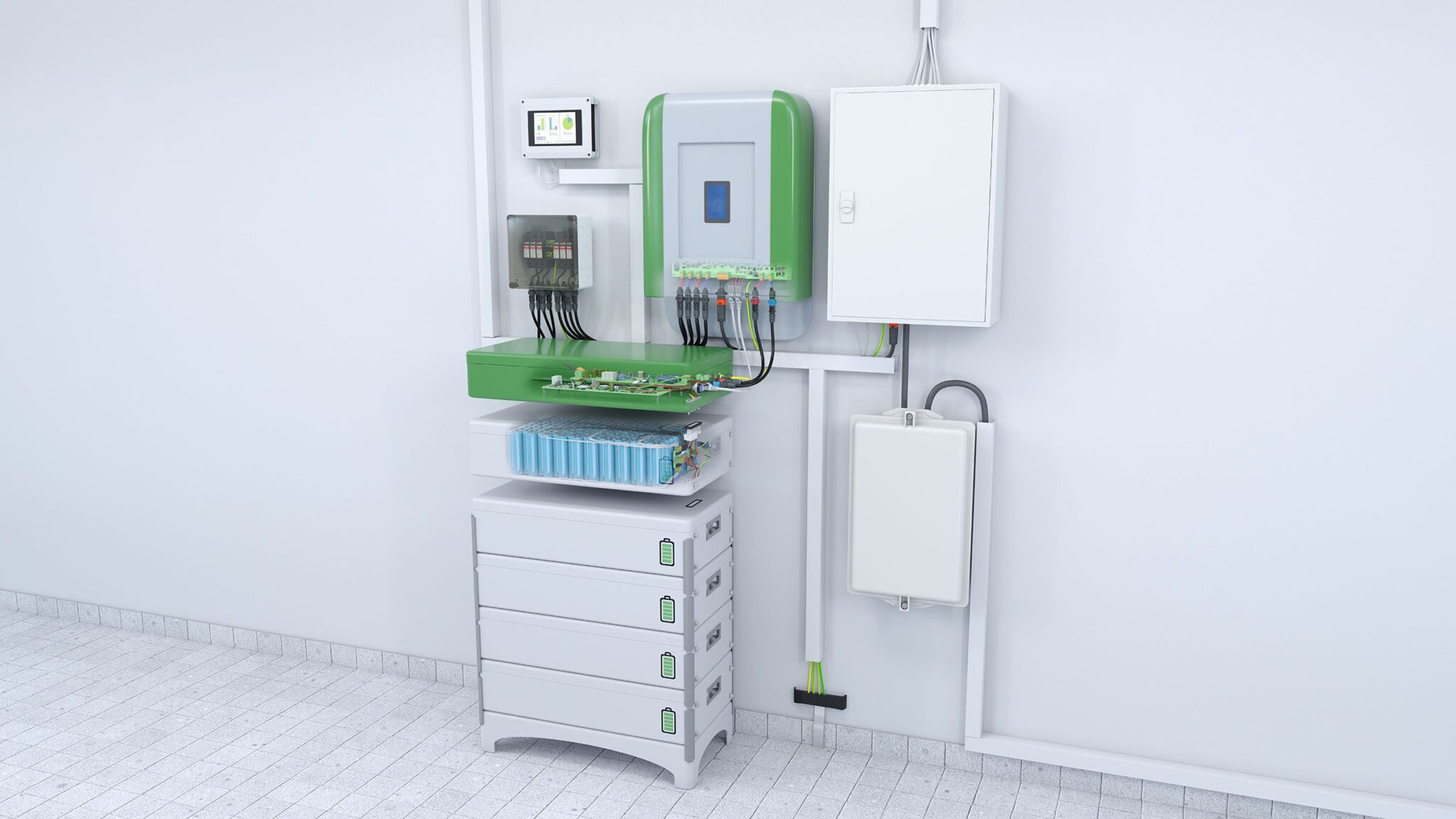Building Better Battery Storage Solutions
Our growing demand for energy on the go and on demand is made possible with a powerful new generation of batteries. Interconnects play an important role in the development of innovative battery storage solutions.
Battery storage is at the forefront of solutions in the quest to meet the somewhat conflicting demands for more power and less energy consumption, as well as incorporating more sustainable sources of energy. This is happening at multiple levels, from utility scale to building/facility level to residential systems.
“Over the last couple of years, we’ve really gotten engaged in the utility market,” said Joel Boone, product marketing manager North America – field device connectors at Phoenix Contact. One of the main challenges utilities face is providing power to customers when it is most needed, which is not necessarily when it is available.
“That’s the idea behind utility grade storage. We harness the energy from renewable sources, or even from traditional energy sources, but we maximize our ability to manage delivery when the energy is needed, such as at peak times,” Boone said.

To meet today’s energy demands requires innovative storage solutions, like these modules from Phoenix Contact.
Energy storage helps overcome some of the constraints that utilities have traditionally experienced as consumption continues to increase. Utility installations for energy storage are made up of batteries in racks, sometimes in huge containers. The cells are put into modules and ganged together to produce significant power. These modules can be linked in a series or stand alone as a single unit. On the front, each module has connectivity to a management system that goes from module to module.

Industrial energy storage system
This modular approach is designed to make it easy to replace a cell or set of cells that go bad for any reason. It is also scalable, depending on needs and goals, explained Bill Ahumada, DC solutions engineer and market development manager at Phoenix Contact. “The utility scale is the biggest system. Commercial/industrial for a building or factory is structured in much the same manner, just in a smaller version. A residential system is the smallest, but still similar.”
Rolling blackouts are a way municipalities currently maximize their ability to meet demand during peak consumption times. In this way, the burden of limited power is shared by users across the grid to ensure demand doesn’t exceed supply. Since energy is generated from renewable sources when it is available, which is not always when it is needed, improving battery storage solutions to store energy when it is produced (sunny days for solar power, windy days for wind power) makes that power available for use when demand is high. This takes the burden off the consumer. The more that energy can be generated and stored, rather than used immediately, the more likely demand can be met seamlessly.
In the ever-evolving energy landscape, utilities are in a race to that best solution, said Ahumada. One approach, he explained, is co-location, meaning multiple renewable energy systems or storage assets exist locally within a single grid connection. “Some of it is putting it in strategic locations where it’s closer to where it will be utilized. Typically, this ties in and supplements the standard energy sources. It’s designed to take some of the burden off the existing infrastructure of electric power today and harness the energy that we’re able to generate or pull from these renewable sources, capture it, and hold onto it to for when it’s needed to help in those peak times when demand is really, really high. The current system can’t support that, but now we have a way to meet that need — we can then use the power that’s been stored in the energy storage system as needed and on demand,” Ahumada explained.

Residential energy storage system
How connectivity fits in the battery storage puzzle
Much of the technology used in energy storage today originated in the electric vehicle (EV) market. “Connectivity is needed to gang power together between cells and between modules, as well as for signal and communication. Many of the folks in this space come from that EV background or mobility background, where CAN bus is very popular. It seems to be their protocol of choice for communicating between battery modules and for developing the full containers or the battery management system because it’s something they’re familiar with,” said Boone.
All sorts of things are being monitored inside these containers to make sure the batteries are performing at peak level. Are the cells balanced? Are there temperature concerns? Does the HVAC system need to be engaged? “But one of the biggest things is these power connectors. We’re talking about one-aught, two-aught cable, in some cases. These are large, heavy copper cables. The connectors need to handle the large gauge wire,” said Boone.
To do that, the connectors need to meet several requirements. They should be flexible and able to rotate 360 degrees on the socket to help with larger cables and dressing of the cables between modules. Another important consideration is a locking mechanism to make sure that once the connector is engaged on the socket, the plug stays in place. Crimp connections are a preferred method.
IP67 rating is also important. Even though these are sealed containers, they may need to be opened for troubleshooting. Water condensation can occur from HVAC systems or with passive cooling methods, prompting the need for sealing on the connectors.
The future of battery storage
One trend that Boone and Ahumada are seeing is more power. The systems are getting more efficient, getting more out of the batteries to generate and harvest more power. Pulling all these cells together to produce a larger output means that connectors and cables have to get bigger, or an alternative is needed to get away from the large cable sizes. Phoenix Contact is positioning itself for the coming system innovations around how the cells are packaged to produce the most amount of power, which is what the end-use customers want. “How do we best support that four-aught cable? Is it the right thing to do to have a pluggable style connector and a modular system with a larger cable? That’s a lot to work with there. We’ve got some alternatives in mind such as an initial busbar connector designed to move some of those connections to the back of the battery module,” said Boone. “Most systems are designed for front-of-the-battery connection from the module, which means the installer has to deal with heavy cables and make sure everything fits together and dresses properly. If you have an intricate layout, that’s going to take some planning. We developed connectors that are blind-mate and can plug and play with those modules as the racks slide in, allowing all that connectivity to move to the back. Everything becomes touch proof at that point because nobody’s dealing with high power on the front of the module.”
Speed is another factor. “As these systems become larger and push the envelope, they also need to be able to pull the power out fast because they’re supporting a community or a whole town and there’s a huge draw. Pulling power quickly cause components to heat up. Larger cables and connectors are needed to pull the energy out fast and to restore the energy fast,” said Ahumada.
The number of connections in these systems is also increasing, so another popular request from customers is to make the connections quicker and repeatable, so overall the system is more efficient and more reliable. “Hybrid connectors, combining power and signal, or power signal and data, into one connector instead of multiple connectors is an option. We’re starting to see condensed form factors to maximize the available space, or minimize the amount of space required, while maintaining performance and reliability,” Ahumada said.
Visit the Preferred Supplier page for Phoenix Contact to learn more about the company and its products.
Like this article? Check out our other Alternative Energy and Power articles, our Industrial Market Page, and our 2023 Article Archives.
Subscribe to our weekly e-newsletters, follow us on LinkedIn, Twitter, and Facebook, and check out our eBook archives for more applicable, expert-informed connectivity content.
- Sealing Success: Overmolding for More Secure Connections - April 23, 2024
- Medical Cable Assemblies Product Roundup - April 23, 2024
- Mezzanine Connectors Product Roundup - April 16, 2024





